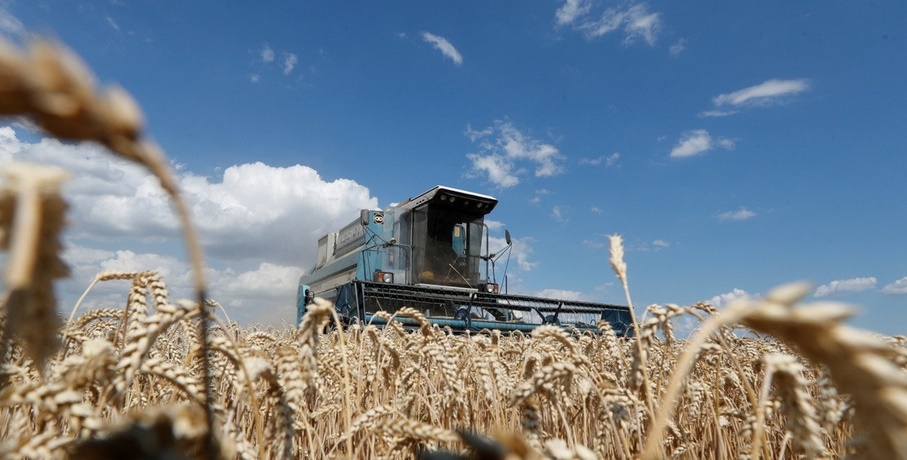
How important are the agreed delivery quantities for the world market?
This morning, the first grain carrier left the port of Odessa since the Russian invasion began in February. The resumption of grain exports via the Black Sea, agreed on July 22, was welcomed worldwide. An EU spokesman said it was a first step towards alleviating the world food crisis triggered by Russia’s war.
In fact, the Ukraine war has dramatically exacerbated the hunger crisis in many countries. According to the UN, around 50 million more people are starving as a result of the war. Before the war, the Middle East and North and East African countries such as Egypt, Libya and Somalia were heavily dependent on supplies from Russia and Ukraine.
Significant relief
To what extent can the deliveries now agreed relieve the market and alleviate the need? If you look at the world grain market, the agreed size of an export of around 22 million tons of grain through the corridors that have now been opened is quite relevant.
The London-based International Grains Council (IGC) expects a gap between global production and global consumption of around 24.7 million tons for the crop year 2022/23 as a result of the Ukraine war. This means that many countries will have to touch their granaries, especially in the coming year. Such a situation usually causes increased nervousness on the grain markets. The IGC estimates global storage for 2022/23 at 607.5 million tons, which is also above the previous year’s value due to the war. According to information from Kyiv, more than 20 million tons of grain from last year’s harvest are still waiting to be exported to the Ukraine.
Should the agreed quantities actually reach the crisis regions, this would noticeably improve the supply situation. However, there have been serious doubts about Russia’s willingness to fully implement the agreement since its conclusion.
Nothing has yet been said about the affordability of grain products in the individual countries. The governments in the crisis regions usually try to improve the supply of their population through various market interventions, also in order to defuse the problem, which is essential for political stability. The perspectives for an adequate supply vary from country to country.
Wheat price important indicator
The wheat price is an important indicator of global grain supply, even if it is distorted at times by speculative spikes. Concerns as a result of the Ukraine war drove the trend-setting listing on the French futures exchange MATIF to a record high of EUR 438 per ton in mid-May. Since then, the price has fallen significantly again. In particular, the negotiations on opening the Black Sea routes have significantly relieved the market since mid-June. In the early afternoon, the ton was listed at 338 euros, almost two percent lower than on Friday.
Market remains tight
A year ago, however, a tonne of wheat was still available for around 220 euros. This shows how tense the grain market still is.
In addition to the uncertainties regarding the export of quantities already produced, the occupation and devastation of arable land and infrastructure is severely restricting agricultural production in Ukraine. Ukrainian President Volodymyr Zelenskyy recently warned that this year’s grain harvest is likely to be only half as high as usual. In the record year 2021, the country had still produced 33 million tons. Russian President Vladimir Putin, on the other hand, announced record exports of 50 million tons for this harvest year – apparently including the more than two million tons just harvested from the annexed Crimean Peninsula.
Grain prices are not only market indicators, but also provide incentives for producers to increase their cultivation in line with the market situation. For example, the IGC expects significantly higher harvests in Brazil and Canada in the coming year. However, India, the second largest wheat producer after Russia, shows that it is not just the Ukraine war that has tightened market conditions. In recent years, climate change has increasingly made itself felt here. As a result of the recent heat waves, the subcontinent will probably be able to harvest significantly less in the coming year.




